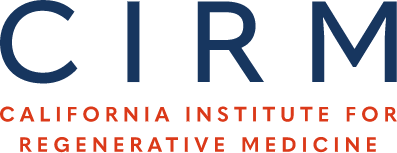Stem Cell Scientist Training Program
Grant Award Details
Grant Type:
Grant Number:
EDUC2-08411
Investigator(s):
Name:
Type:
PI
Award Value:
$2,699,722
Status:
Closed
Progress Reports
Reporting Period:
Year 1
Reporting Period:
Year 2
Reporting Period:
Year 3
Reporting Period:
Year 4 – 17 month report
Reporting Period:
Year 5 + NCE
Grant Application Details
Application Title:
Stem Cell Scientist Training Program
Public Abstract:
The main focus of the CSUN-UCLA Stem Cell Scientist Training Program is heavily weighted on goal-oriented practical laboratory training experience in stem cell biology and stem cell-based patient therapies. Our program is integrated with educational, ethical, and guidance features for highly qualified and culturally diverse senior undergraduate students. Our internship-host institution provides mentors who are world-leaders in fundamental stem cell research and therapeutic translational applications. There is a great diversity of available hands-on training environments in human and mouse embryonic and adult or cell type-specific stem cell biology, spanning the basic to translational investigative spectrum. Our partnership achieves all of the major Bridges Program objectives including: 1) training laboratory personnel in current stem cell research techniques, policy, and ethics, 2) introducing community outreach, patient advocacy, and career counseling for future stem cell-based therapies, and 3) facilitating the entry of an ethnically and culturally diverse student population into the emerging world of stem cell biology and regenerative medicine. Our training program will provide CIRM interns with opportunities to study the latest advances in stem cell biology, to present their own work in settings in which they can obtain constructive feedback, to interact with their peers in formal and informal forums, to meet leaders in the field, to interact with patients, and to develop their career potential through advisement and mentoring. CIRM internships at our host institution will be 10 months in duration for undergraduate students in screened and selected labs and will be preceded by intensive training at CSUN and in the USC Stem Cell Core Facility. The majority of intern time will be spent on laboratory research. Interns will be taught stem cell and essential analysis techniques such as microscopy, cell sorting, and good laboratory practices (GLP) in the internship-host lab and affiliated cores. Their projects will be discussed with and picked in partnership with the lab mentor, who will pair interns with more advanced senior graduate or post-doctoral students working in the area of the trainee’s project. This hands-on experience will be supplemented by participation in a biweekly Stem Cell Club, attendance at the weekly stem cell seminar series, attendance at a yearly International Stem Cell Symposium and several other research symposia, by career counseling and community outreach, and by formal and informal mentoring by host-institution lab faculty. A major purpose of our inter-institutional training program is to provide an opportunity for engaged, interested, and successful interns to gain the necessary skills and qualifications to springboard into careers in stem cell research that spans the spectrum, from basic studies to translational approaches to stem cell-based patient therapies, in academia and industry.
Statement of Benefit to California:
Te CSUN-UCLA Stem Cell Scientist Training Program will train students in world-leading UCLA labs for positions performing stem cell research in academia and industry with a goal of providing patient therapies. Interns will come from a culturally and ethnically diverse CSUN applicant pool, increasing underrepresented groups engaged in stem cell research. CSUN is designated as a “Hispanic-Serving Institution” by the Department of Education, having 38% (12,691) of the undergraduate student population identifying as Hispanic, and half of these as economically challenged. In fact, CSUN ranked 11th for the number of bachelor degrees awarded to minority students and ranked 9th in the number of bachelor’s degrees conferred to Hispanics in the nation (“Hispanic Outlook,” 2014). CSUN is among the most diverse of the CSU campuses with additional demographics of: African American (5.6%), Native American and Pacific Islanders (0.5%), White (27%), and Asian (11%) students. 15,722 (47.1%) of the undergraduate students were members of historically underrepresented ethnic groups in Fall 2013. CSUN was ranked 8th of 539 comprehensive universities in the United States in producing students who go on to earn a Ph.D. in Science, Mathematics, and Engineering (NSF. 2011). The mission statement of the University is: “California State University, Northridge exists to enable students to realize their educational goals. The University’s first priority is to promote the welfare and intellectual progress of students. The vision of the University is inspired by the belief that our commitment to educational opportunity, inclusion, and excellence will extend the promise of America to succeeding generations” (CSUN Catalog). Our training program will provide a workforce for California's biotechnology, pharmaceutical, and stem cell companies, propelling hiring and increased economic prosperity for the state. UCLA is the largest single State employer with economic activity generating more than $1.8B annually in taxes. Each dollar of taxpayer investment in UCLA generates almost $34 in economic activity. More than 140 companies have been created based on technology developed at UCLA. An active portfolio of almost 3,000 inventions and more than 900 patents means UCLA plays a central role in shaping our world. CSUN generates an $954 million impact on the regional economy and more than $982 million on the state economy. This impact sustains more than 8,400 jobs and generates nearly $55 million per year locally, and nearly $59 million statewide in tax revenue. Alumni earnings attributable to their CSUN degrees of almost $3.2 billion creates an additional $5 billion industry activity statewide. Our trainees will have a tangible health and economic impact on California, its academic institutions, and its biotechnology, pharmaceutical, and stem cell companies, and the rest of the nation as California and its people move forward with personalized medicine during the 21st century.
Publications
- Stem Cell Reports (2021): beta-Globin Lentiviral Vectors Have Reduced Titers due to Incomplete Vector RNA Genomes and Lowered Virion Production. (PubMed: 33186538)
- Nat Commun (2021): Conservation and divergence of vulnerability and responses to stressors between human and mouse astrocytes. (PubMed: 34172753)
- Sci Adv (2024): Defining metabolic flexibility in hair follicle stem cell induced squamous cell carcinoma. (PubMed: 39303037)
- Stem Cell Reports (2018): Deriving Dorsal Spinal Sensory Interneurons from Human Pluripotent Stem Cells. (PubMed: 29337120)
- Endocrinology (2022): The G209R mutant mouse as a model for human PCSK1 polyendocrinopathy. (PubMed: 35245347)
- Nat Neurosci (2021): Identification of neural oscillations and epileptiform changes in human brain organoids. (PubMed: 34426698)
- Mol Ther (2020): Improved Titer and Gene Transfer by Lentiviral Vectors Using Novel, Small beta-Globin Locus Control Region Elements. (PubMed: 31628051)
- Aging Cell (2024): Increased mitochondrial mutation heteroplasmy induces aging phenotypes in pluripotent stem cells and their differentiated progeny. (PubMed: 39680477)
- J Invest Dermatol (2024): Inhibition of Pyruvate Oxidation Diminishes Melanoma Progression. (PubMed: 39566840)
- Blood (2023): Lentiviral gene therapy for X-linked chronic granulomatous disease recapitulates endogenous CYBB regulation and expression. (PubMed: 36332160)
- Mol Ther Methods Clin Dev (2024): Lentiviral vectors for precise expression to treat X-linked lymphoproliferative disease. (PubMed: 39309261)
- Trends Cell Biol (2021): Mitochondrial DNA Dynamics in Reprogramming to Pluripotency. (PubMed: 33422359)
- Cell Res (2019): Mitochondrial metabolism and glutamine are essential for mesoderm differentiation of human pluripotent stem cells. (PubMed: 31189991)
- bioRxiv (2024): Modeling Cortical Versus Hippocampal Network Dysfunction in a Human Brain Assembloid Model of Epilepsy and Intellectual Disability. (PubMed: 39282353)
- PLoS One (2020): Molecular consequences of fetal alcohol exposure on amniotic exosomal miRNAs with functional implications for stem cell potency and differentiation. (PubMed: 33196678)
- Mol Ther Methods Clin Dev (2024): A novel high-titer, bifunctional lentiviral vector for autologous hematopoietic stem cell gene therapy of sickle cell disease. (PubMed: 38745893)
- CRISPR J (2021): Optimizing Integration and Expression of Transgenic Bruton’s Tyrosine Kinase for CRISPR-Cas9-Mediated Gene Editing of X-Linked Agammaglobulinemia. (PubMed: 33876953)
- Sci Transl Med (2021): Patient-derived glial enriched progenitors repair functional deficits due to white matter stroke and vascular dementia in rodents. (PubMed: 33883275)
- STAR Protoc (2022): Protocol for germ lineage differentiation of primed human pluripotent stem cells using chemically defined, nutrient-balanced media. (PubMed: 35880122)
- Nat Cell Biol (2023): Regenerating human skeletal muscle forms an emerging niche in vivo to support PAX7 cells. (PubMed: 37919520)
- Stem Cell Res (2021): Reliable generation of glial enriched progenitors from human fibroblast-derived iPSCs. (PubMed: 34274773)
- Neuron (2019): A Single-Cell Transcriptomic Atlas of Human Neocortical Development during Mid-gestation. (PubMed: 31303374)
- Cell Rep (2023): Strength of CAR signaling determines T cell versus ILC differentiation from pluripotent stem cells. (PubMed: 36906850)
- Epigenetics (2018): A temporal transcriptome and methylome in human embryonic stem cell-derived cardiomyocytes identifies novel regulators of early cardiac development. (PubMed: 30240284)
- Stem Cell Reports (2022): TGFbeta superfamily signaling regulates the state of human stem cell pluripotency and capacity to create well-structured telencephalic organoids. (PubMed: 36179695)
- Transl Stroke Res (2023): Theta Frequency Electromagnetic Stimulation Enhances Functional Recovery After Stroke. (PubMed: 37962771)
- Cell Rep (2022): In vitro atlas of dorsal spinal interneurons reveals Wnt signaling as a critical regulator of progenitor expansion. (PubMed: 35858555)



